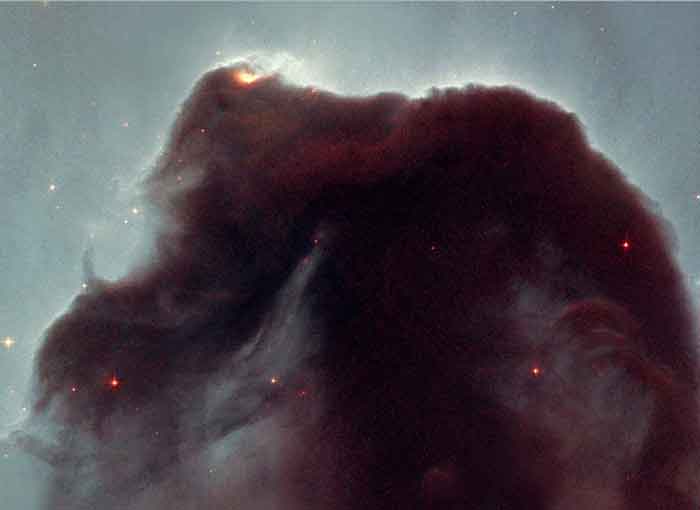
The Horsehead Nebula, Image Credit: NASA, NOAO, ESA and The Hubble Heritage Team (STScI/AURA)
Acknowledgment: K. Noll (Hubble Heritage PI/STScI), C. Luginbuhl (USNO), F. Hamilton (Hubble Heritage/STScI)
The Horsehead Nebula (also known as Barnard 33 in bright nebula IC 434) is a dark nebula in the Orion constellation. The nebula is located just below Alnitak, the star furthest left on Orion's Belt, and is part of the much larger Orion Molecular Cloud Complex. It is approximately 1,500 light years from Earth, and is approximately 3.5 light years wide.
One of the most identifiable nebulae in the sky, it is part of a swirling cloud of dark dust and gases, shaped like a horse's head (hence its name), but some people also believe it looks like a lion and its mane. Also known as Barnard 33, the unusual shape was first discovered in 1888 by Williamina Fleming on photographic plate B2312 taken at the Harvard College Observatory.
The red glow originates from hydrogen gas predominantly behind the nebula, ionized by the nearby bright star Sigma Orionis. The darkness of the Horsehead is caused mostly by thick dust, although the lower part of the Horsehead's neck casts a shadow to the left. Streams of gas leaving the nebula are funneled by a strong magnetic field. Bright spots in the Horsehead Nebula's base are young stars just in the process of forming.
Observation data (Epoch J2000.0)
Type Dark
Right ascension 05h 40m 59.0s
Declination −02° 27′ 30.0"
Distance 1,600 ly
Apparent magnitude (V) –
Apparent dimensions (V) 8 × 6 arcmins
Constellation Orion
Physical characteristics
Radius –
Absolute magnitude (V) –
Notable features –
Other designations IC 434, Barnard 33,
LDN 1630, M3T 31,
[OS98] 52
Retrieved from "http://en.wikipedia.org/"
All text is available under the terms of the GNU Free Documentation License

